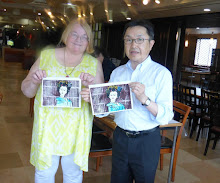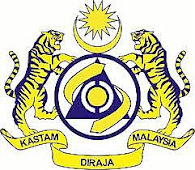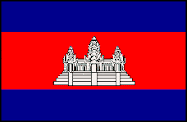I stayed here for three nights. The "best" time to stay in Malacca is Friday, Saturday and Sunday as the Jonker Street night markets are held then and are still going on until midnight or so. The market closes earlier on a Sunday night.
I tend to disagree with going to Malacca for a day trip. When I was planning my itinerary, I'd originally planned on doing a day trip (public buses) or a day tour. Several people had advised me if you see Penang you don't really need to go to Malacca as they're pretty much the same. They were wrong.
I found that Malacca was nothing like Penang - it was completely different. A friend stayed there recently and said two nights would be best. (I had three nights, it was the end of my trip and caught the bus straight to LCCT on the Monday morning). I arrived there around 4.30pm, Friday, went to Christ Church, Stadthuys, and the area around there. If you go to St. Paul's Church you get a magnificant view of the sunset (I found this out by accident - it's the best place to watch the sunset)
Next day saw me seeing the other "sights" on that side - the Malacca Sultanate Palace (cultural museum) is a replica of Sultan Mansur Shah's palace, the famous Sultan who ruled Malacca from 1456 -1477 and is awesome - you need at least an hour there. Cost is MYR2 and they give you a plastic bag for your shoes. Most of the next day was spent in Chinatown and seeing the "attractions" there.
My Walking Tour
Armed with a map, lots of scribbled notes which I couldn't read (I'm a shocking writer - I'd never win a prize for Penmanship!) and a bottle of water, I set out on my tour to discover the delights of old Malacca. From my accommodation (Heeren House in Heeren Street), I started out with Jonker Walk.
Above: Jonker Walk
If you enlarge the photo, you can see Heeren House at the end - it has a red and white striped roof. Luckily for me, the street was pretty empty at this time so I was able to get a clear, unimpeded view. Located in the heart of Old Malacca just west of the Malacca River, Jonker Street comes alive at night.
Above: Malacca River Cruise
It is necessary to cross over the river and as I crossed, this river boat cruise went past.
Dutch Square
I was so excited to actually be here - I've seen many photos of this area and was like a big kid in a toy shop! It was so thrilling to see these beautiful old buildings with their red brickwork and there were people everywhere milling about. Sometimes it was difficult to take a photo without everybody and his maiden aunt in the picture. But perseverance is the name of the game and the results are below.
Above: Dutch Square
Whoever is Lord in Malacca has his hand on the throat of Venice. (Duarte Barbosa, 16th century writer and trader).
Malacca's famous Dutch Square is in the centre of the city. Having a wonderful display of many unique Dutch mansonry and architectural skills, Dutch Square is famous for its red-painted buildings and is also known as the "Red Square."
Above: Dutch Square
Major structures in / surrounding the Dutch Sqaure include Christ Church Melaka, Studhuys, and the Tang Beng Swee Clock Tower. This is a close up of an animal sculpture - rather pretty don't you think?
Above: Tang Beng Swee Clock Tower
The Tang Beng Swee Clock Tower outside the Stadthuys was given to the people of Malacca in 1886 by Mr Tan Jiak Kim to fulfil the wishes of his father, Tan Beng Swee, who was a third generation of a Chinese philantrophic millionaire family. Tan Beng Swee, was the son of Tan Kim Seng who donated both the bridge adjacent to the clocktower and land for the Chinese cemetery. The original clock was imported from England. When the clock was replaced by one from Seiko in 1982, it caused an uproar among the senior citizens of Malacca who still recall the harsh treatment they suffered during Japan occupation. This Tang Beng Swee Clock Tower looks Dutch, but it is not. (Source Melaka Tourism)
Above: Christ Church
The church was built in 1753 and was originally the Dutch Reformed Church of Malacca, but today Christ Church is now an Anglican Church.
The pink bricks were shipped from Zeeland in the Netherlands and plastered with local red laterite and is the oldest surviving Dutch church building found outside the Netherlands. It's the oldest protestant church in Malaysia. There are Dutch tombstones on the floor and the sacramental silverware on the altar still bears the Dutch coat of arms.
Out of all the buildings here, I think Christ Church must be the most famous - certainly the most photographed. Every webpage of information about Malacca shows this church. It's my favourite building, not sure why but it just is. There is something timeless about a church - especially old churches. They seem to represent something solid and lasting.
Above: Queen Victoria's Fountain
The Queen Victoria Diamond Jubilee Fountain was erected in 1904 by the people of Malacca to commemorate Her Majesty's 60th anniversary on the British throne
Above: Melaka Art Gallery
Next to Christ Church is the Melaka Art Gallery. It was built in 1784 and was the Dutch Administrative Complex. In 1826, it was turned into a school (Malacca Free School). In the 1920s, the building was renovated to a double-storey building and was later used as a post office before being converted into the museum we see today.
The art gallery is also known as the PERZIM Art Gallery and has various artworks of local and foreign artists on display including Wan Hui-Jyu, Jehan Chan, Gerard Van Den Oetelaar, Rahmat Ramli, Rafie Abd Rahman and Rafie Abd Ghani.
Above: Trishaws
Ah trishaws - one of the most colourful and delicious confections, they are a sight for sore eyes. Beautifully decorated with flowers and whizz bang things they look gorgeous all lined up sitting in a row.
Above: Trishaws in the Square
More trishaws. No visit to Malacca is complete without a ride in one of these delightful little conveyances - everybody does it. It's something you just have to do.
Above: Malaysia Youth Museum
The museum is part of the Melaka Art Gallery and is dedicated to the contribution made by the youth in the economic and social well-being of the country.
Above: Melaka Tourist Police
If tourists have any problems, if you've had your bag stolen or your camera nicked this is the place to go. The tourist coppers are the ones to see - they're used to handling complaints and stuff from tourists. Fortunately I've never had the need of their services.
Above: Policewoman
This local copper kindly agreed to let me take her photo. (Copper is Aussie slang for a policeman/policewoman).
Above: Melaka River
Doesn't the riverside promenade look charming with its brick texture along the shop house row? And there's that river cruise boat again!
Above: Church of St. Francis Xavier - 1849
Father Farve, a Frenchman, built this Church in 1849. The Gothic towered church is dedicated to St. Francis Xavier who is well-remembered for his missionary work spreading Catholicism to South East Asia in the 16th Century.
Above: UNESCO
I came across this building on my walk and thought it deserved a quick snap of the camera.
Above: Malacca River - Jambatan Chan Koon Cheng
Another of the foot bridges crossing the Melaka River.
Above: Discovery Cafe
This is where I ended up - the Discovery Cafe where you can book bus tickets. I booked my onward bus ticket Malacca to LCCT for the following Monday morning. The place also has accommodation upstairs, and the downstairs was fair booming with life. Had I not been staying at Heeren House, this would have been a good place to stay if you like plenty of noise and life. The only downfall in my eyes is its location in nowhere near as convenient.
Above: Visitor Information Centre
Walking back, I am now back to Dutch Square. The building is quite handsome with a tiled roof complete with cupola and white balustrading at the front. We call them milk bottles" 'cos that's exactly what they look like! There's even a little balcony with seating and potted plants.
Above: Stadhuys
The largest building of all is the Stadhuys which literally means town hall in Dutch and is pronounced "stat-highs" It was built in 1650 as the office and residence of the Dutch Governor and Deputy Governor. Today, the Stadthuys is now the History and Enthnography Museum
I took this photo looking down and was able to get the whole of the building in, It really is magnificent, there's a lot of workmanship and craftmanship went into the building of it. What a pity they don't build like this anymore. Which is why I do love the old buildings with their architecture and such attention to detail.
St. Paul's
Finally I came to the last "sight" on my agenda - St. Paul's Church. Given the already long length of this post, I was considering finishing here and writing about St. Paul's in a separate post but thought that would be silly as this post is titled "Melaka Walking Tour" and the church was the end of that tour, so here it is.
Above: St. Paul's Church
This church was built by a Portuguese Captain Duarte Coelho in 1521. It was a smallish chapel called Nosa Senhora - Our Lady of the Hill. The chapel was handed over to the Jesuits in 1548 and enlarged in 1556 with the addition of a second storey renamed "Annunciation".
When the Dutch took over Melaka from the Portuguese, they changed the name to St. Paul's Church - the Portuguese were Roman Catholic as are the Jesuits so the Church was therefore a Catholic Church and the Dutch being Protestants couldn't have that. Hence the name change - and used it for 112 years until their own church (Christ Church was built). The old church was then subsequently deconsecrated and the nave was used as a burial ground.
Above: A closer look
St. Paul's Church lost its tower when the British took over but had one new feature added to it - the lighthouse at the front. Not a very religious lot, the British - they didn't use the church to worship and pray - they used it to store gunpowder. They also erected a tall flagpole and renamed the hill on which the church stands to Flagstaff Hill (Bukit Bendera), but the name however didn't last. The flagpole was taken down and the church abandoned.
Above: Statue of St. Francis Xavier
St. Francis Xavier was born Francisco de Jasso y Azpilicueta (7 April 1506 – 3 December 1552) in Navarre (now Spain) and was a pioneering Roman Catholic missionary and co-founder of the Society of Jesus. He led an extensive mission into Asia, and brought Christianity and Catholicism to the area. He is known as the Apostle of the East.
He died in China in 1553 and his body was sent back to Malacca, where it was interred there for nine months. When the body was transferred to Goa, the exhumation was quite surprising - even though he had been buried for nine months, his body showed little sign of decay. The right forearm, which Xavier used to bless and baptise his converts, was detached by Pr. Gen. Claudio Acquaviva in 1614 and sent to Rome at the Pope's request. Blood was said to have gushed out of the arm even though he had been dead for 62 years. Francis Xavier was cannonised a Saint in 1622 and what remained of his right arm in Rome was merely skeleton, but the body in Goa remained incorrupt minus the right arm.
In 1952 the Bishop of Macau decided to put a statue of St. Francis Xavier in front of St Paul's Church. A carars marble statue was ordered from Italy and was sculptured by the famous Italian sculpture, G.Toni and was ready for the forth centenary celebrations on the 22 March 1953. One night a huge tree fell, burying the statue. On clearing the branches, the statue was found to be intact except for the right arm which had broken off.
Above: Closeup of the arch
Old tombstones line the sides of the ruins.
Above: Dutch tombstone
The tombstone reads,
HIERLEY T BEGRAVEN HENDRIK
SCHENKENBERGH INSYNLEVEN
OPPER-COOPMAN EN TWEEDE
PERSOON DERSTADEN FORTRESSE
MALACCA OVERLEDEN DEN
29 IUNY 1671
Above: St. Francis Xavier's former burial placeThe tombstone reads,
HIERLEY T BEGRAVEN HENDRIK
SCHENKENBERGH INSYNLEVEN
OPPER-COOPMAN EN TWEEDE
PERSOON DERSTADEN FORTRESSE
MALACCA OVERLEDEN DEN
29 IUNY 1671
The famous Spanish-born Jesuit missionary St. Francis Xavier was a regular visitor to the church from 1545 to 1552 and when he died his body was interred here for nine months before being exhumed and taken to his final resting place in Goa, India. A statue of St. Francis was built in 1952 to commemorate his passing and internment here.
The St. Paul's church ruins were gazetted as an old monument and historical site under the Antiquities Act No. 168/1976 on May 12, 1977.







































No comments:
Post a Comment